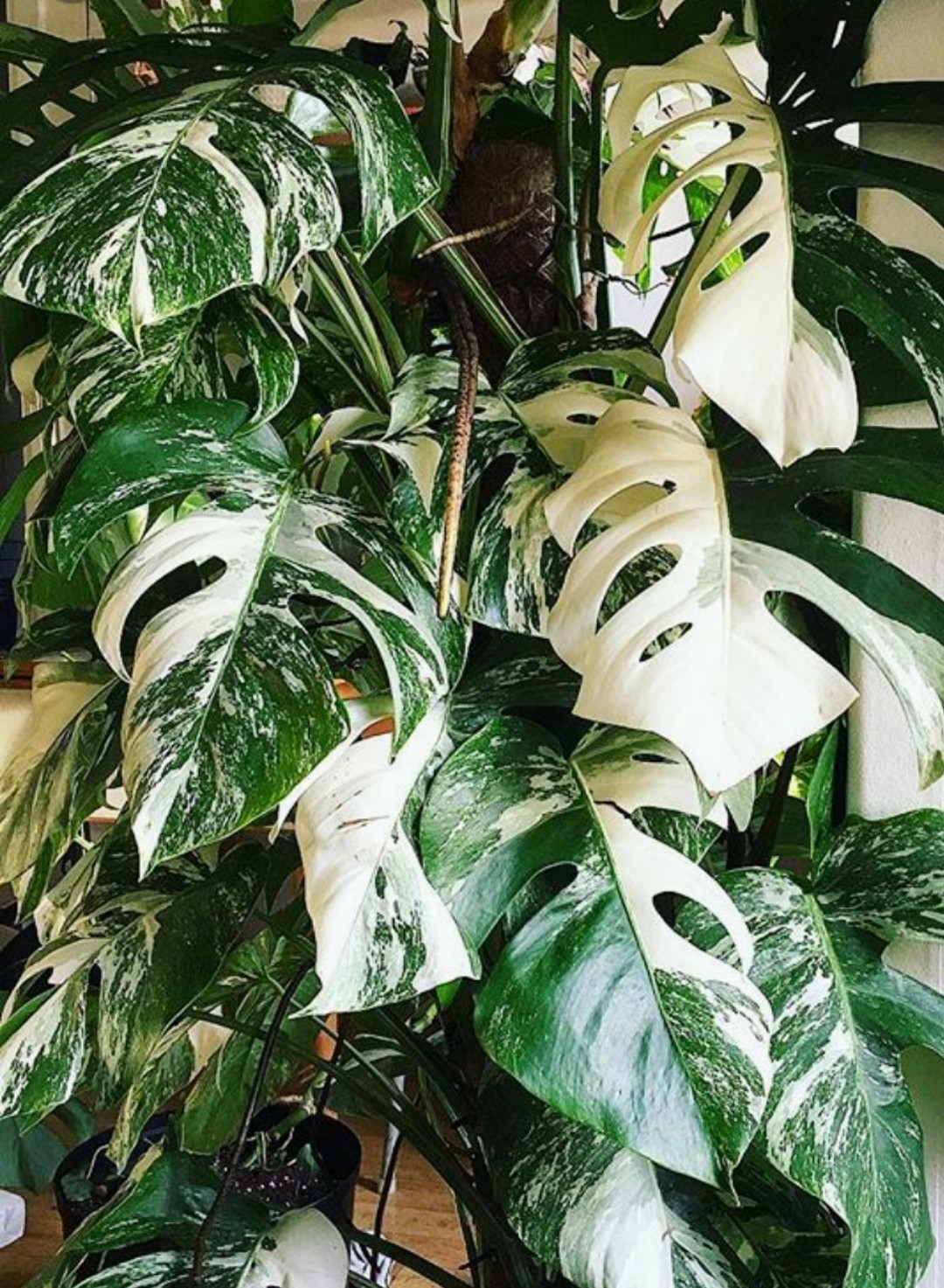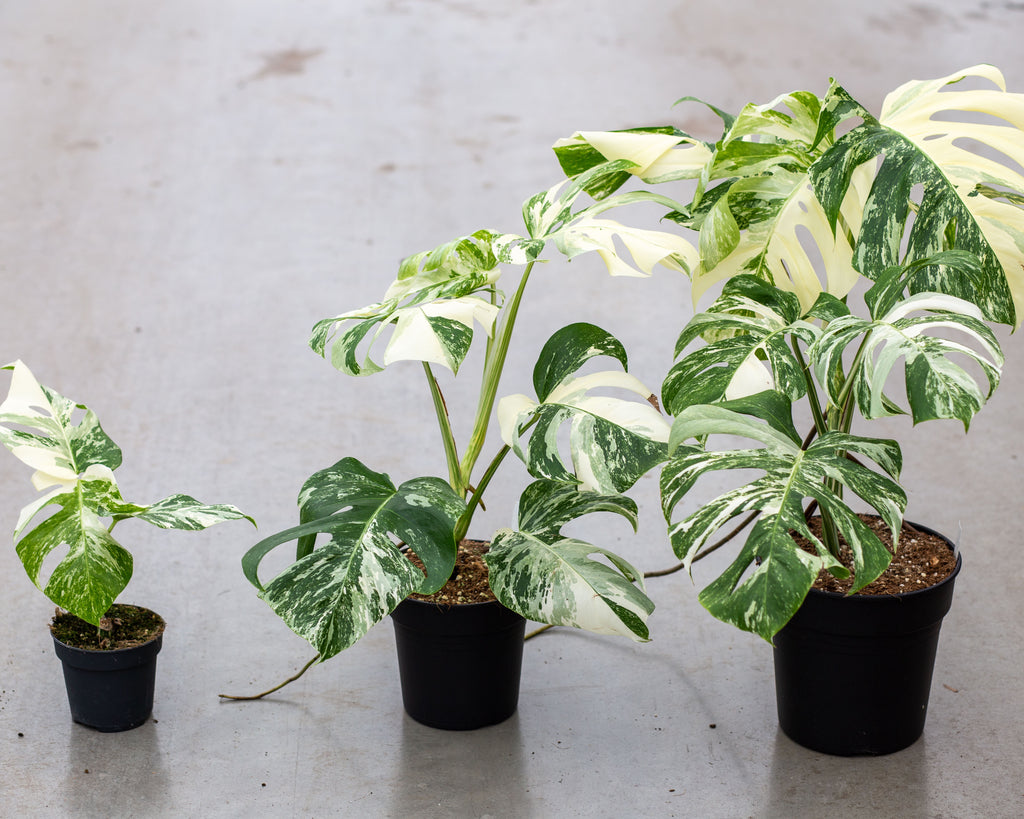The Enigmatic Majesty of Monstera Variegata: A Comprehensive Guide
The Monstera Variegata, a botanical marvel that captivates plant enthusiasts worldwide, stands as a testament to nature’s artistry. Its striking variegated leaves, a mesmerizing blend of green and creamy white, have propelled it to the forefront of the indoor plant craze. This article delves into the intricacies of this sought-after plant, exploring its origins, care requirements, propagation methods, and the factors that contribute to its allure.
A Glimpse into the Wild
The Monstera Variegata, like its non-variegated counterpart, Monstera deliciosa, hails from the tropical rainforests of Central and South America. These regions, characterized by high humidity, warm temperatures, and dappled sunlight, provide the ideal environment for these plants to thrive. The variegation, a natural mutation, occurs when certain cells lack chlorophyll, resulting in the characteristic white or cream patterns. This mutation is inherently unstable, making each variegated Monstera unique and contributing to its rarity.
The Science Behind Variegation

Understanding the science behind variegation is crucial for appreciating its complexity. The white or cream areas on the leaves lack chlorophyll, the pigment responsible for photosynthesis. This means these areas cannot produce energy from sunlight. As a result, the plant relies heavily on the green portions of its leaves for survival. This explains why variegated Monsteras often grow slower than their non-variegated counterparts and require more attentive care.
Distinctive Features
The most distinguishing feature of the Monstera Variegata is, of course, its variegation. The patterns can vary significantly, ranging from small splashes of white to large, dramatic sections that cover entire leaves. Some common types of variegation include:
Half-moon: Leaves with one half green and the other white.
Distinguishing from Other Monsteras

While the variegation is the primary identifier, it’s essential to distinguish Monstera Variegata from other Monstera species. Monstera deliciosa is the most common, but other species like Monstera adansonii and Monstera pinnapartita exist. The key is to look for the characteristic fenestrations (holes) in the leaves, which develop as the plant matures. The combination of fenestrations and variegation confirms a true Monstera Variegata.
Light: Finding the Perfect Balance
Providing the right amount of light is crucial for the health of a Monstera Variegata. While they thrive in bright, indirect light, direct sunlight can scorch the delicate white portions of the leaves. A location near an east or north-facing window is often ideal. Insufficient light can lead to reduced variegation and slower growth.
Watering: Avoiding Overwatering
Overwatering is a common mistake that can lead to root rot. Allow the top inch or two of soil to dry out between waterings. The frequency of watering will vary depending on the temperature, humidity, and pot size. Ensure the pot has proper drainage to prevent waterlogging.
Humidity: Mimicking Tropical Conditions
Monstera Variegata prefers high humidity, similar to its natural rainforest habitat. This can be achieved by:
Using a humidifier.
Soil: Providing Adequate Drainage
A well-draining soil mix is essential. A combination of potting soil, perlite, and orchid bark provides the necessary aeration and drainage.
Fertilizing: Nourishing Growth
During the growing season (spring and summer), fertilize your Monstera Variegata every 4-6 weeks with a balanced liquid fertilizer diluted to half strength. Avoid fertilizing during the dormant winter months.
Temperature: Maintaining Warmth
Monstera Variegata prefers warm temperatures between 65-85°F (18-29°C). Avoid exposing the plant to temperatures below 50°F (10°C).
Support: Encouraging Upward Growth
As Monstera Variegata matures, it will benefit from a support structure, such as a moss pole or trellis. This encourages upward growth and mimics its natural climbing habit.
Stem Cuttings: The Most Common Method
Stem cuttings are the most common and effective method for propagating Monstera Variegata.
1. Select a healthy stem: Choose a stem with at least one node (the point where a leaf emerges) and a healthy aerial root.
2. Make the cut: Using a clean, sharp knife or pruning shears, make a cut just below the node.
3. Prepare the cutting: Remove any leaves from the bottom portion of the cutting.
4. Rooting medium: Place the cutting in water, sphagnum moss, or a well-draining soil mix.
5. Provide warmth and humidity: Place the cutting in a warm, humid environment.
6. Wait for roots to develop: Roots should begin to develop within a few weeks.
7. Potting: Once the roots are a few inches long, pot the cutting in a suitable soil mix.
Air Layering: A Less Invasive Approach
Air layering is a method that allows you to root a stem while it is still attached to the parent plant.
1. Select a healthy stem: Choose a stem with a node and a healthy aerial root.
2. Make a small cut: Make a shallow cut on the stem just below the node.
3. Apply rooting hormone: Apply rooting hormone to the cut area.
4. Wrap with sphagnum moss: Wrap the cut area with moist sphagnum moss.
5. Cover with plastic wrap: Cover the moss with plastic wrap to retain moisture.
6. Wait for roots to develop: Roots should begin to develop within a few weeks.
7. Cut and pot: Once the roots are visible, cut the stem below the rooted area and pot the new plant.
Yellowing Leaves: Addressing Overwatering or Underwatering
Yellowing leaves can be a sign of overwatering or underwatering. Adjust your watering schedule accordingly.
Brown Tips: Increasing Humidity
Brown tips are often caused by low humidity. Increase humidity by misting, using a humidifier, or placing the plant on a pebble tray.
Lack of Variegation: Providing Adequate Light
Insufficient light can lead to reduced variegation. Ensure the plant receives bright, indirect light.
Pests: Identifying and Treating Infestations
Common pests include spider mites, mealybugs, and scale insects. Inspect your plant regularly and treat any infestations with insecticidal soap or neem oil.
Root Rot: Preventing Overwatering
Root rot is a serious problem caused by overwatering. Ensure the soil has proper drainage and allow it to dry out between waterings.
The Collector’s Item
Monstera Variegata’s rarity and stunning appearance have made it a highly sought-after collector’s item. Its unique variegation patterns mean that no two plants are alike, adding to its exclusivity.
Factors Contributing to Rarity
Genetic instability: The variegation is a natural mutation that is inherently unstable.
The Monstera Variegata, with its captivating variegation and tropical charm, continues to enchant plant enthusiasts worldwide. While its care requirements may be slightly more demanding than those of its non-variegated counterpart, the rewards are well worth the effort. By providing the right environment and attentive care, you can enjoy the beauty and elegance of this botanical treasure for years to come. Understanding its origins, propagation, and care ensures a healthy and thriving plant.
